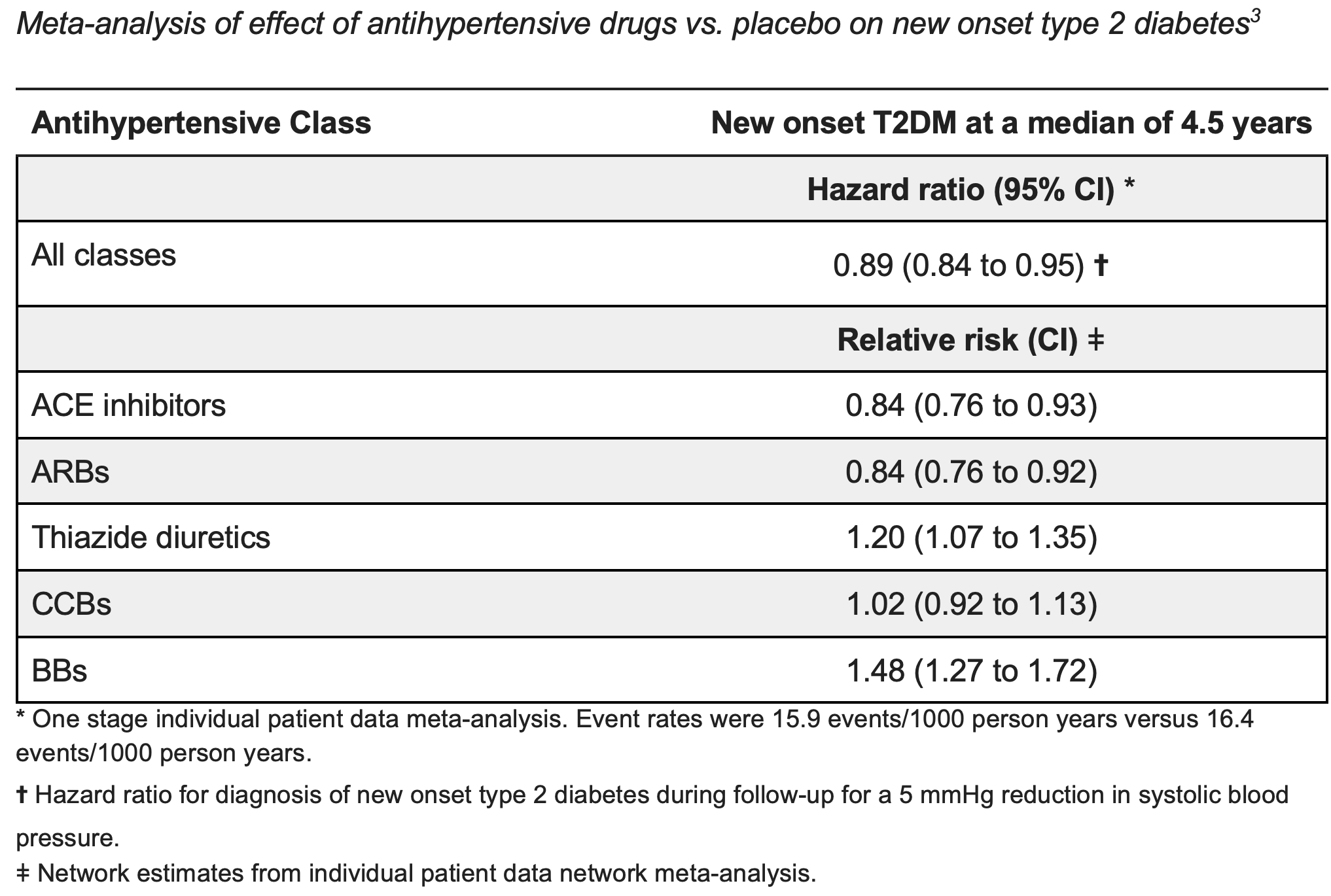Article
Clinical Overview: Certain Antihypertensive Drugs Can Lower Risk for New Onset Type 2 Diabetes
Author(s):
Meta-analysis of randomized controlled trials adds to growing evidence around certain antihypertensive drug classes showing promise for primary or secondary prevention of diabetes.
The Centers for Disease Control and Prevention estimates that approximately 116 million American adults have hypertension and 88 million have prediabetes (defined as a hemoglobin A1c of 5.7% to 6.4%).1,2
Chances are that these 2 patient populations have a lot of overlap. Our current methods to prevent diabetes through lifestyle modifications, diet, exercise, and metformin, could use some new additions to help in the battle against disease progression.
A recent study from Nazarzadeh et al. in The Lancet assessed whether any of the 5 major antihypertensive drug classes reduce the risk for new-onset type 2 diabetes (T2DM).3 The 5 major classes of antihypertensives included were angiotensin converting enzyme (ACE) inhibitors, angiotensin II receptor blockers (ARBs), beta-blockers (BBs), calcium channel blockers (CCBs), and thiazide diuretics.
The authors performed an individual-patient data meta-analysis of randomized controlled trials that compared the 5 major drug classes with placebo or other antihypertensive drugs for primary or secondary prevention. A key exclusion in this meta-analysis was trials including patients with an existing diabetes diagnosis.
There were 19 randomized controlled trials (RCTs) included in the one-stage individual patient data meta-analysis. The mean age of trial participants was 65 years, 61% were men, and the mean systolic blood pressure was 153 mmHg, with a mean diastolic blood pressure of 89 mmHg.
Nazarzadeh and colleagues found that in patients who were treated for hypertension, ACE inhibitors and ARBs each reduced the risk for new onset diabetes by 16%. Thiazide diuretics and BBs, on the other hand, increased risk by 20% and 48%, respectively. CCBs did not have a significant impact on risk.
Unfortunately, of the 19 RCTs included in the analysis, hemoglobin A1c was not regularly reported. Only 6.8% of the expected 15% to 30% of the 145,939 participants developed diabetes during the 4 and a half years of follow-up, which may represent the fact that many participants had hemoglobin A1c levels below 5.6% at baseline.
The trials also did not report prediabetes as criteria for inclusion, rather criteria for the diabetes diagnosis were fasting glucose levels and the incidence of new onset diabetes was reported as an adverse event. As such, the meta-analysis could not assess the prevalence of prediabetes at baseline for the patient population.
For ACE inhibitors, the absolute risk reduction was 1.19% with a number needed to treat of 85. For ARBs, the absolute risk reduction was 0.56% with a number needed to treat of 179.
How is it that thiazide diuretics and BBs increase hyperglycemia and impair insulin sensitivity? Thiazide diuretics deplete serum potassium, which may in turn inhibit insulin release from the pancreas.4
It is also theorized that thiazide diuretics promote hepatic insulin resistance.5 BBs may inhibit the release of insulin from pancreatic beta-cells through blockade of beta 2-adrenoreceptors. Additionally, medications that reduce peripheral blood flow may take blood away from sites of glucose uptake in skeletal muscle.4,5
Non-selective BBs can limit peripheral blood flow by reducing cardiac output, and they may also decrease peripheral vasodilation by acting on beta 1 and beta 2-receptors, respectively. It is unclear whether there is a difference between non-selective and cardio-selective BBs when it comes to increasing the risk of type 2 diabetes, as both are associated with increases in blood glucose levels.5
This meta-analysis contributes to a growing body of evidence that suggests certain classes of antihypertensive drugs can reduce the risk for new onset type 2 diabetes and that ACE inhibitors or ARBs should be our first-line agents in patients with prediabetes.

About the Author
Sara Luhrs, PharmD Candidate, University of Minnesota Class of 2022
Preceptors: Danielle Hess, PharmD, BCPS and Linda Huang, PharmD, BCPS
References
- Centers for Disease Control and Prevention. Facts about hypertension. Accessed at: https://www.cdc.gov/bloodpressure/facts.htm on April 27, 2022.
- Centers for Disease Control and Prevention. Prevalence of prediabetes among adults. Accessed at: https://www.cdc.gov/diabetes/data/statistics-report/prevalence-of-prediabetes.html on April 27, 2022.
- Nazarzadeh M, Bidel Z, Canoy D, et al. Blood pressure lowering and risk of new-onset type 2 diabetes: an individual participant data meta-analysis. Lancet. 2021;398(10313):1803-1810. doi:10.1016/S0140-6736(21)01920-6.
- Blackburn DF, Wilson TW. Antihypertensive medications and blood sugar: theories and implications. Can J Cardiol. 2006;22(3):229-233. doi:10.1016/s0828-282x(06)70902-3.
- Hirst JA, Farmer AJ, Feakins BG, Aronson JK, Stevens RJ. Quantifying the effects of diuretics and β-adrenoceptor blockers on glycaemic control in diabetes mellitus - a systematic review and meta-analysis. Br J Clin Pharmacol. 2015;79(5):733-743. doi:10.1111/bcp.12543.






